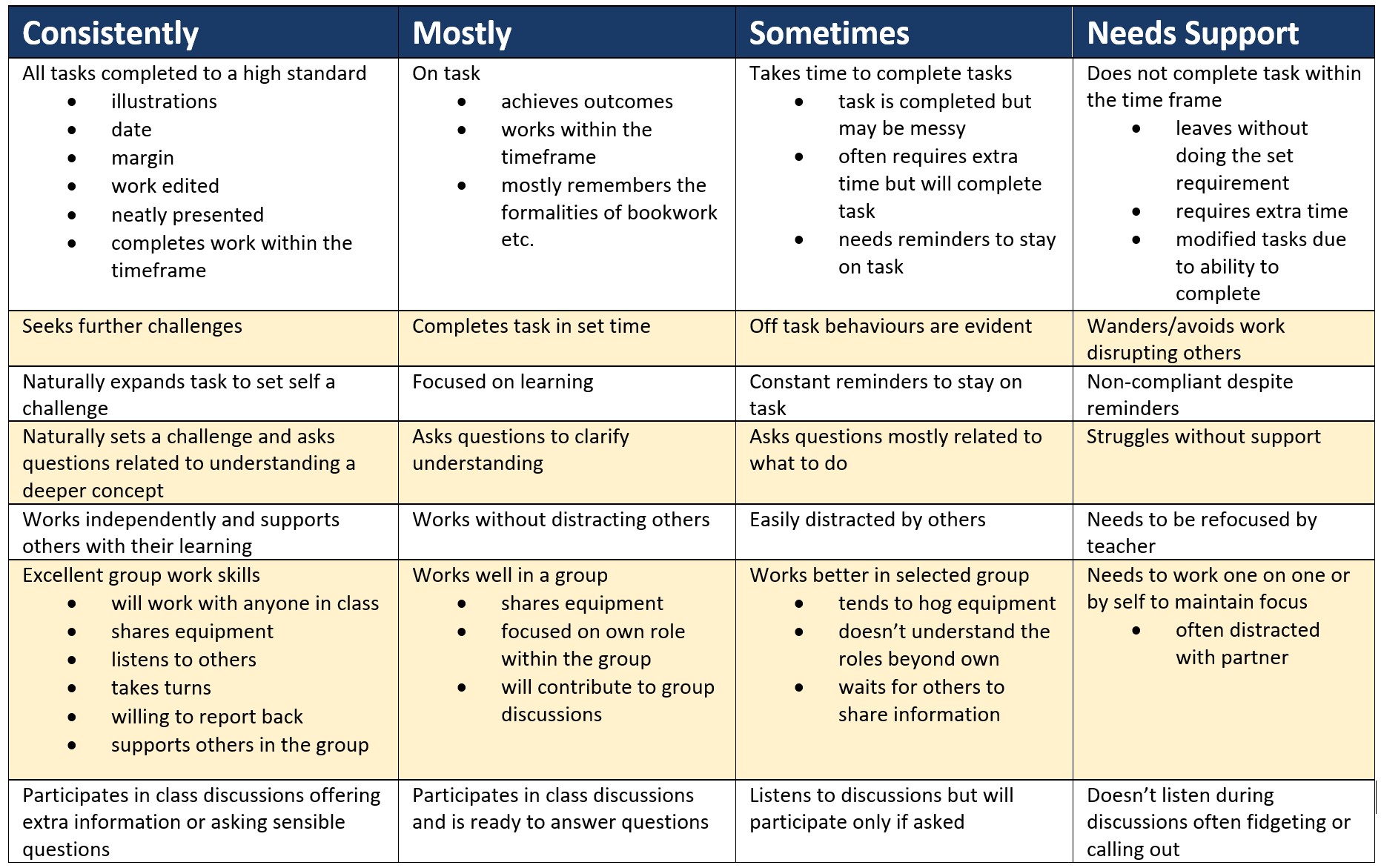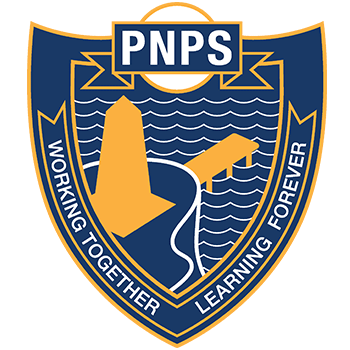Effort Rubric
(Click to enlarge)

Standard of Educational Achievement
The Standard of Educational Achievement is measured using the Australian Curriculum which describes the progress and achievement at a student’s year appropriate level.
| GRADE | Standard of Achievement |
|---|---|
| A | Excellent achievement beyond what is expected at this year level |
| B | Good achievement of what is expected at this year level |
| C | Satisfactory achievement of what is expected at this year level |
| D | Partial achievement of what is expected at this year level |
| E | Minimal achievement of what is expected at this year level |
Learning Areas and the Australian Curriculum
All students are assessed in accordance with the learning areas of the Australian Curriculum at their year level.
The English curriculum is built around the three interrelated strands of language, literature and literacy. Together, the three strands focus on developing students’ knowledge, understanding and skills in listening, reading, viewing, speaking, writing and creating.
The Mathematics curriculum is organised around the interaction of three content strands and four proficiency strands. The content strands are number and algebra, measurement and geometry, and statistics and probability. They describe what is to be taught and learnt. The proficiency strands are understanding, fluency, problem-solving and reasoning.
The Science curriculum has three interrelated strands: science understanding, science as a human endeavour and science inquiry skills. The science understanding comprises four sub-strands, being biological, chemical, physical and Earth and Space sciences.
The Humanities and Social Sciences curriculum learning area includes a study of History, Geography, Civics and Citizenship and Economics and Business. Each of the learning areas are organised into two broad strands, being knowledge and understanding and inquiry and skills.
The Technologies curriculum describes two distinct but related subjects: Design and Technologies and Digital Technologies. Each subject has two strands, being knowledge and understanding and processes and production skills.
Physical Education Teacher (R-6): Mike Woolford
Health (R-4) Specialst
Health (4-6) Teacher: Mike Woolford
The Health and Physical Education curriculum is organised into two content strands: personal, social and community health and movement and physical activity.
Visual Arts
Reception, Year 2-6: Danni Baumann
Year 1/2: Specialist Teacher
Performing Arts
R-2: Seb Braim
Year 2-6: Specialist Teacher
The Arts curriculum is a learning area that draws together related but distinct art forms. The Australian Curriculum: The Arts comprises five subjects: Dance, Drama, Media Arts, Music and Visual Arts. Each area focuses on its own practices, terminology and unique ways of looking at the world.
TEACHER: Seb Braim R-6
The Australian Curriculum: Languages – Auslan aims to develop the knowledge, understanding and skills to enable students to:
- communicate in Auslan
- Understand language, culture and learning and their relationship, and thereby develop an intercultural capability in communication
- Understand themselves as communicators
- Develop a knowledge and an understanding of the diversity of Deaf experience and the nature of identity.
